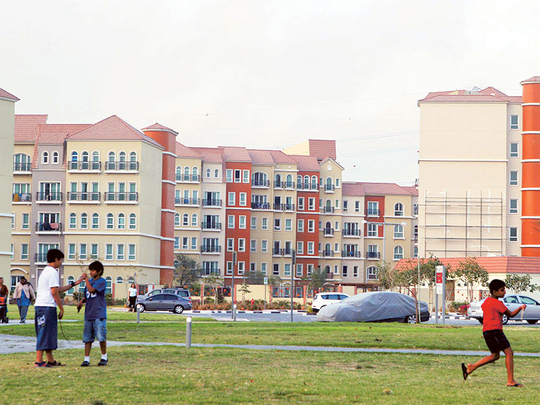
Dubai: Dubai’s developers are going the extra mile to prop up their residential property sales numbers with “stretched” payment plans now being the norm for off-plan launches. By way of incentives, developers are trying to limit the size of the instalments buyers have to make, as well as offering payment plans that go way beyond the completion of the property.
This way, the developers are casting the net wide to bring in more end-users into the buying activity rather than rely exclusively on investors.
So much so, payment plans are “sometimes even outweighing price per square foot” as the factor in determining whether the sales will go ahead or not, according to a Dubai realty update issued by CBRE, the consultancy.
‘Flexible, back-weighted payment plans are allowing investors and end-users to secure properties with a minimal initial down payment and low instalments, with a large lumpsum paid upon or after completion’, the report states.
This is a situation that helps other buyers too. For instance, they can let out the properties and use the rental income thus generated to pay off their instalments.
Developers will need to do all they can to convince buyers that they should get into the market now. According to the CBRE data, ‘average residential sales prices have fallen by around 2 per cent quarter-on-quarter, mirroring the decline recorded in the first quarter’.
“This reflects the current weakening of demand, as well as global economic conditions that have negatively impacted investor sentiment,” said Matt Green, Head of Research & Consultancy UAE, CBRE M.E.
“Whilst there was an overall decline in average sales values, certain sub-markets actually saw more pronounced declines. Interestingly, the largest value drops were recorded in prime areas, with more affordable locations in many cases outperforming.”
The bit about ‘affordable’ locations seeing increased activity is interesting. Developers with such projects are more likely to be more “generous” in how they structure payment plans than those with more upscale aspirations. This again works in favour of budget-conscious buyers.
Meanwhile, rates in “secondary” locations remain unchanged, including at Al Nahda, Hor Al Anz and Discovery Gardens, “reinforcing the resilience of Dubai’s low-cost housing options and reflecting the continued flight to affordability”, the report notes.
Despite the drops recorded during first-half, sales prices in the established locations are still around 1 per cent higher than the same period last year. Whether there would be yet further declines to levels last seen during Q2-Q3 of 2013 will thus be central to seeing more investor interest in Dubai’s secondary market transactions.
“Although lower oil prices have had little impact on the real estate market to date, Dubai could potentially see the projects being scaled back as developers become more cautious about spending amid ongoing uncertainties,” said Green.
“Delivery of substantial supply is likely to place additional pressure on prices. It is also expected that the appreciation of the real exchange rate will compress performance across all asset classes and reduce investor sentiment in the short term.”
For a better reading of what investors could be up to, the market will have to wait until after summer.











